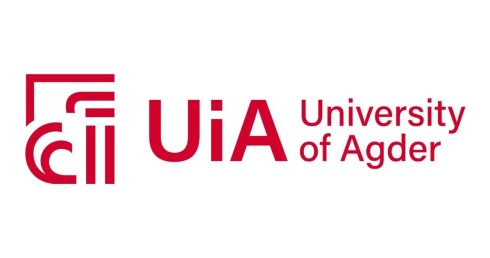THIS CONTENT IS BROUGHT TO YOU BY THE University of Agder - read more
Hero or villain? War criminals are no longer seen as monsters
Recent art and literature challenge the traditional narrative of World War II. Instead of portraying one-sided heroes and traitors, they paint a more nuanced picture of the war.

“The national core narrative of heroes and villains from the Second World War has lost its shine,” says Unni Langås.
She is a literature professor at the University of Agder.
Langås recently released a new book about how war criminals are depicted in today's art and cultural expressions.
For 80 years, the Norwegian story about the war has been quite unambiguous.

On one side stood the king, the resistance fighters, and the good Norwegians. On the other side, Vidkun Quisling, the traitors, and the evil Germans. This black-and-white portrayal is now being challenged.
New stories bring new interpretations
“New stories keep bringing new interpretations of how we understand and remember the war. Some of them also attempt to change our view of the past in certain areas,” says Langås.
The new book contains 14 studies of recent stories where the collaborator, the traitor, and other war criminals take centre stage.
These stories come from non-fiction, poetry, and novels. But artworks, theatre performances, and memorials are also considered narratives.
Memory studies examine how we remember the past
Memory studies are not historical studies of what actually happened, but rather investigations of how we create and maintain memories of the past.
“Memory studies are about how we experience and interpret what has happened and convey it in films, books, and other forms of storytelling,” says Langås.
The core narrative is under pressure
From 1945 until around 1990, the Norwegian story of war heroes and traitors was quite uniform. It established itself as the national core narrative of the war years.
“The core narrative shows how the nation wants to understand itself, but it doesn't have much room for nuance. You're either among the good or the bad, among the heroes or the traitors,” says Langås.
This narrative was part of the curriculum in teacher training, primary and secondary schools until recently. It was also often part of speeches on Norway's Constitution Day across the country. In this way, the memories of heroes and traitors were maintained.
But since the 1990s, more and more children, grandchildren, and great-grandchildren have created stories about family members who weren't war heroes. This is an international trend that is also happening in Norway.
“Recent stories about the war increasingly focus on those who ended up on the wrong side. Numerous portrayals of the war criminal have emerged in recent years,” says Langås.
Self-examination and reckoning
A recurring theme in the new stories is a childhood filled with shame and silence. Descendants take a reckoning with a time and war that wasn't their own, but which still affected them and their families for many years.
“It's both about the need to get to know your family – and the fear of recognising yourself in them. Many fear their own identity is shaped by the extremes of a father who tortured a victim, or a great-grandfather who betrayed his country,” says Langås.
Among the collection of articles is an analysis of authors Erlend Wichne, Wencke Mühleisen, and Ida Jackson.
“They tell, in a way, a double story. They speak of a Nazi past in close family and attempt to understand themselves and their own lives today from that perspective,” she says.
Monsters become human
That war criminals are now depicted as nuanced humans instead of monsters does not mean they are acquitted or portrayed as innocent.
“It simply means the image of unambiguous heroes and traitors becomes nuanced. To get close to the criminal makes the person more than just a criminal. He becomes a father, brother, family man,” says Langås.
New voices speak
She reminds us that it's not new that our perception of the war to be largely based on films and literature.
“The past is over, but memories are continuously retold in old and new ways. Today's stories are somewhat of a renegotiation of the core narrative about the correct perspective of the past,” says Langås.
New books and films spark discussions about the core narrative and how we understand the war. This is how new thoughts and ideas about the past arise, the researcher explains.
“Remember, for example, that in the first decades following the war, neither Jews nor women were part of the memories of the Norwegian war,” says Langås.
She refers to the book about Herman Sachnowitz, Det angår også deg (It concerns you too) from 1976, as one of the first books about the war from a Norwegian-Jewish perspective.
“Also, stories about women who had children with German soldiers have new interpretations. After the war, they were publicly shamed and called 'tyskertøs.' In recent stories, they are also seen as young women in love,” she says.
Tyskertøs is a derogatory term for women who had liaisons with German soldiers.
Art shapes memories
For Langås, it's important to emphasise that these perspectives aren't about undermining the truth about the war, but about expanding our understanding.
“The national core narrative has had its golden age. Now authors, artists, and others telling stories about the war want to show more sides of heroes and villains from the wartime days,” says Langås.
———
Read the Norwegian version of this article on forskning.no

This content is paid for and presented by the University of Agder
This content is created by the University of Agder's communication staff, who use this platform to communicate science and share results from research with the public. The University of Agder is one of more than 80 owners of ScienceNorway.no. Read more here.
More content from the University of Agder:
-
The law protects the students. What about the teachers?
-
This researcher has helped more economics students pass their maths exams
-
There are many cases of fathers and sons both reaching elite level in football. Why is that?
-
How we used plants to protect ourselves from evil
-
What is it like for nurses to promote health behind bars?
-
This can make life easier for new maths teachers




































